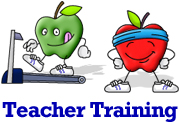There is as much power for the creative mind in knowing that no one will access the creation as there is in knowing that the creation is accessible for an indiscriminate number of viewers.
I revisit this space after 8 years, and I decide to give it another shot. My friend and I have been discussing developing each a blog and I have invited her to move this discussion to this space to give it the aspect of brainstorming and an actual search for a purpose. There are many reasons why I think this is a good idea:
1. The title of this space "Only Connect: Turn Mirrors into Windows" yields itself to a variety of topics and not only to educational matters which the blog was originally dedicated to.
2. In the past 8 years, that educator part of me grew and diminished until it has found a balance (I hope) and allowed for other facets to emerge and breathe (the activist, the foodie, the woman, the musician, the dreamer, the traveler, and many others I hope - not that I am fond of labels). I still need to write about education, but also about places, food, relationships, loss, love, growth, fear, values, social media, etc. and naturally how all these intersect and overlap. In other words, I need this space to make sense of my experiences (as if I were writing with no one watching), and I need this space to connect with those of you out there who might find in my reflections something like a mirror into themselves or a window into a new way of thinking.
3. My friend is herself quite the curious / fascinated type. She has an array of interests related to culture, design, food, society, people, fashion, science, movies, music, etc. Her style is different and her tools more diverse. I will let her take care of the introduction if my suggestion finds a way into her heart :-) What matters is that we both need an outlet for expression, and we both enjoy engaging with the world around us hopefully in meaningful ways.
4. Finally, we both need to move to the next step, which is actually posting, even if experimentally, in order to define better what it will be like, what exactly we will write about, how we will write and why (keeping in mind that we might not rely on words as the only tool).
My suggestion is to use this very basic space to move to the next step, actually post entries, sign each her own, experimentally get the sense of it and eventually (within a month) move to other, more indicative, platforms.
I subscribe to the trial. And here I start...
R.
I revisit this space after 8 years, and I decide to give it another shot. My friend and I have been discussing developing each a blog and I have invited her to move this discussion to this space to give it the aspect of brainstorming and an actual search for a purpose. There are many reasons why I think this is a good idea:
1. The title of this space "Only Connect: Turn Mirrors into Windows" yields itself to a variety of topics and not only to educational matters which the blog was originally dedicated to.
2. In the past 8 years, that educator part of me grew and diminished until it has found a balance (I hope) and allowed for other facets to emerge and breathe (the activist, the foodie, the woman, the musician, the dreamer, the traveler, and many others I hope - not that I am fond of labels). I still need to write about education, but also about places, food, relationships, loss, love, growth, fear, values, social media, etc. and naturally how all these intersect and overlap. In other words, I need this space to make sense of my experiences (as if I were writing with no one watching), and I need this space to connect with those of you out there who might find in my reflections something like a mirror into themselves or a window into a new way of thinking.
3. My friend is herself quite the curious / fascinated type. She has an array of interests related to culture, design, food, society, people, fashion, science, movies, music, etc. Her style is different and her tools more diverse. I will let her take care of the introduction if my suggestion finds a way into her heart :-) What matters is that we both need an outlet for expression, and we both enjoy engaging with the world around us hopefully in meaningful ways.
4. Finally, we both need to move to the next step, which is actually posting, even if experimentally, in order to define better what it will be like, what exactly we will write about, how we will write and why (keeping in mind that we might not rely on words as the only tool).
My suggestion is to use this very basic space to move to the next step, actually post entries, sign each her own, experimentally get the sense of it and eventually (within a month) move to other, more indicative, platforms.
I subscribe to the trial. And here I start...
R.





